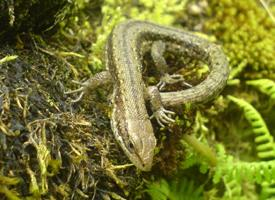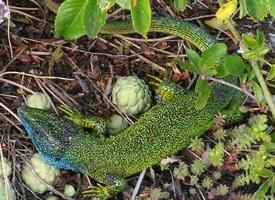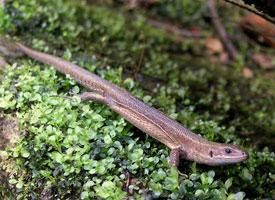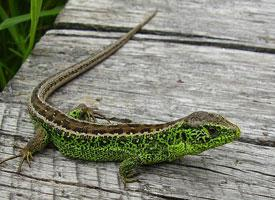
Greutăți și măsuri
| Lungime | 20 cm |
|---|
Descrierea animalului
The Common Wall Lizard (Podarcis muralis) is a small, nimble reptile that belongs to the family Lacertidae, widely distributed across various regions of Europe and has been introduced to North America. This species has adeptly adapted to a variety of habitats but shows a particular affinity for warm, rocky areas, which provide ample sun exposure for basking, crevices for hiding, and a rich hunting ground for its insectivorous diet.Physical Description:
The Common Wall Lizard exhibits a slender body that typically measures between 6 to 8 centimeters in snout-vent length, with its tail adding an additional length that can be twice as long as its body. This species showcases a remarkable variation in coloration and patterning, which can range from shades of grey, brown, green, to even a yellowish hue, often adorned with a mosaic of spots, stripes, or reticulated patterns along its back and sides. The underbelly is usually lighter, varying from white to a vivid orange or red, especially in males during the breeding season, which is thought to play a role in sexual selection. Its skin is covered in small, overlapping scales that add to its agile and streamlined physique.
The head of the Common Wall Lizard is somewhat flattened with a pointed snout, housing keen eyes with round pupils that provide excellent vision, a critical sense for detecting predators and prey alike. Its limbs are well-developed, ending in five digits each, equipped with sharp claws that enable it to skillfully navigate its vertical rocky terrains and climb with ease.
Behavior and Ecology:
The Common Wall Lizard is diurnal, most active during the day when it ventures out to bask in the sun to regulate its body temperature and to hunt. Its diet primarily consists of small invertebrates, including insects, spiders, and occasionally plant material. This species is known for its territorial behavior, especially among males, which vigorously defend their territories through visual displays and physical confrontations.
Reproduction in this species is oviparous, with females laying clutches of 2 to 10 eggs in warm, moist soil or under rocks, where they incubate for several weeks before hatching. The hatchlings are miniature replicas of the adults and are independent from birth, growing rapidly to reach sexual maturity in one to two years.
Conservation Status:
Currently, the Common Wall Lizard is classified as Least Concern by the IUCN Red List, reflecting its wide distribution and abundant populations. However, local populations can be susceptible to habitat destruction, pollution, and the impacts of climate change, underscoring the importance of habitat preservation efforts.
Invasive Species:
While the Common Wall Lizard is native to Europe, it has been introduced to various parts of North America, where it has established thriving populations. In these new environments, it competes with native species for resources, and its impact on local ecosystems is an area of ongoing research.
In conclusion, the Common Wall Lizard is a fascinating and adaptable reptile, thriving in a variety of environments and showcasing a remarkable diversity in behavior and appearance. Its presence across Europe and beyond serves as a testament to its resilience and adaptability, making it a subject of interest not only for herpetologists but for anyone fascinated by the natural world.
Animale similare
Fotografii noi cu animale
Top 10 animale
- Diana monkey (Cercopithecus diana)
- Dolphin gull (Leucophaeus scoresbii)
- Galápagos tortoise (Geochelone nigra complex)
- Moustached guenon (Cercopithecus cephus)
- Japanese spider crab (Macrocheira kaempferi)
- Colossal squid (Mesonychoteuthis hamiltoni)
- Fox tapeworm (Echinococcus multilocularis)
- Stone loach (Barbatula barbatula)
- Japanese macaque (Macaca fuscata)
- Barbary macaque (Macaca sylvanus)


